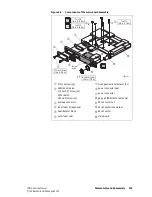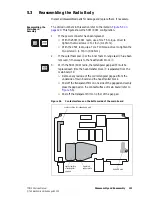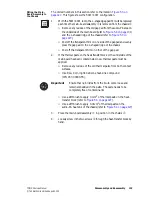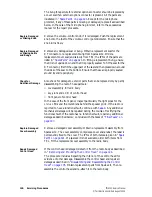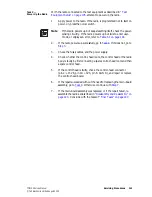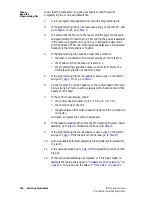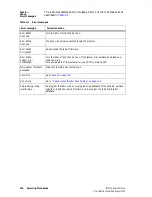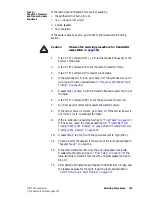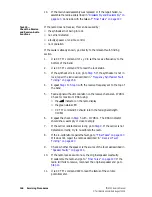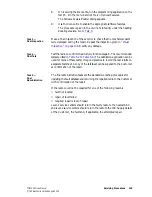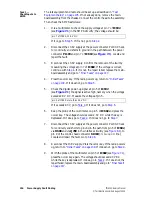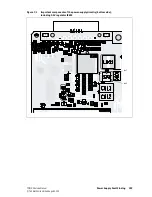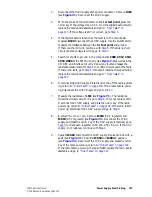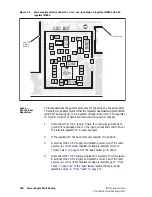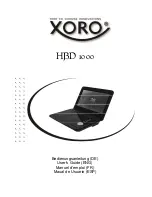
TM9100 Service Manual
Servicing Procedures
143
© Tait Electronics Limited
August 2005
Task 5 —
Obtain the Details
of the Software
Feature Enabler
(SFE)
Use the programming application to obtain and record the details of any
software-enabled features (
Tools > Optional Features
).
For more information refer to the online help of the programming
application.
Task 6 —
Read the
Calibration File
Use the calibration application to read the calibration file and save it on the
test PC. If the calibration file cannot be read, set up a suitable default
calibration file and load it to the radio
Task 7 —
Check the
User Interface
Check the user interface as follows:
1.
Use the programming application to activate backlighting, deactivate
silent and quiet modes, and view the programmed function keys,
channels and scan groups.
2.
Turn on the radio, make sure that the volume control is not set to low,
and check the start-up sequence:
■
the LEDs light up red briefly
■
the speaker gives two short beeps
■
LCD and keypad backlighting activates
■
the LCD displays a power-up message then a channel number, or
an error message.
3.
Check for the following elements of the user interface:
■
volume control: Use CCTM command
1010
to read the volume
potentiometer. The returned value should be between 0 and 255.
■
LCD: Check visually or use CCTM command
1006 1
to switch
on all LCD elements. Power-cycle the radio to reset the LCD to
its original state.
■
PTT key: While pressing the PTT key, the transmit symbol
or
should appear on the radio display (unless transmit is inhibited
on the selected channel).
■
scroll and selection keys: Scroll through all settings and observe the
radio display.
■
function keys: Check whether the programmed function is
activated.
■
keypad: use CCTM command
1009 1
to turn on keypad
notification. Check that each keypress returns a different number.
CCTM command
1009 1
turns keypad notification off.
■
backlighting (if programmed): Any keypress should activate
backlighting.
4.
If there is a fault in the user interface, repair the radio as described in
“Fault Finding of Control Head” on page 397
.
5.
If there is no fault, go to
Task 8
.
Summary of Contents for TM9100
Page 1: ...TM9100 mobiles Service Manual MMA 00017 01 Issue 1 August 2005 ...
Page 4: ...4 TM9100 Service Manual Tait Electronics Limited August 2005 ...
Page 10: ...10 TM9100 Service Manual Tait Electronics Limited August 2005 ...
Page 22: ...22 Introduction TM9100 Service Manual Tait Electronics Limited August 2005 ...
Page 62: ...62 Description TM9100 Service Manual Tait Electronics Limited August 2005 ...
Page 96: ...96 TM9100 Service Manual Tait Electronics Limited August 2005 ...
Page 138: ...138 Disassembly and Reassembly TM9100 Service Manual Tait Electronics Limited August 2005 ...
Page 152: ...152 Servicing Procedures TM9100 Service Manual Tait Electronics Limited August 2005 ...
Page 168: ...168 Interface Fault Finding TM9100 Service Manual Tait Electronics Limited August 2005 ...
Page 244: ...244 Receiver Fault Finding TM9100 Service Manual Tait Electronics Limited August 2005 ...
Page 396: ...396 CODEC and Audio Fault Finding TM9100 Service Manual Tait Electronics Limited August 2005 ...
Page 420: ...420 Fault Finding of Control Head TM9100 Service Manual Tait Electronics Limited August 2005 ...
Page 426: ...426 Spare Parts TM9100 Service Manual Tait Electronics Limited August 2005 ...
Page 430: ...430 TM9100 Service Manual Tait Electronics Limited August 2005 ...
Page 444: ...444 TMAA04 05 Ignition Sense Kit TM9100 Service Manual Tait Electronics Limited August 2005 ...
Page 448: ...448 TMAA10 01 Desktop Microphone TM9100 Service Manual Tait Electronics Limited August 2005 ...

